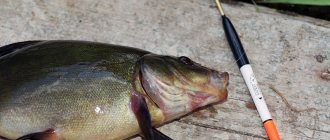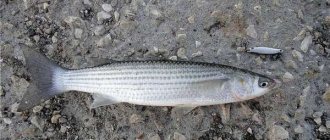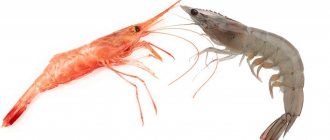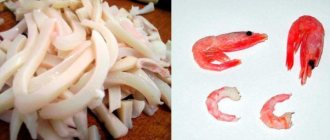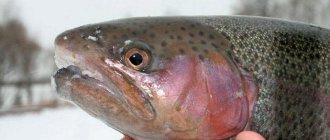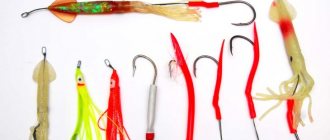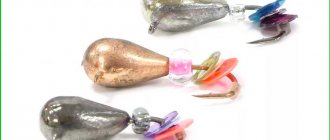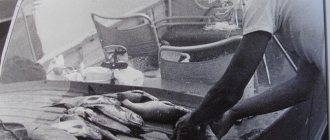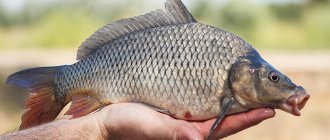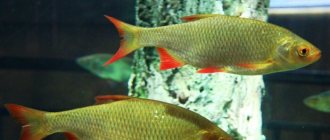Place and time to catch shrimp
Shrimp are caught mainly in the Pacific and Atlantic oceans, as well as in the Mediterranean and Black Sea. For the best fishing, it is advisable to choose a place like an inlet. This will allow you to install a trawl or net against the current in a narrowing place and increase the catch. Also, shrimp can be caught from a boat or in the coastal area. In the latter case, you should choose places near piers, rocks or near the bottom of ships, places where thickets of algae form.
The optimal time of day for successful shrimp fishing is considered to be evening and night hours. As an additional bait, the light of a flashlight is used, which at night attracts sea prey with reflections on the water. An additional feature that helps increase the catch is low tides. Therefore, it is advisable to know the time of their occurrence.
Where and when to catch shrimp.
In the European region, shrimp fishing is especially developed in the Mediterranean, Black and Azov Seas. Although this branch of marine crustaceans has successfully inhabited vast areas of all oceans. Pacific and Atlantic species of shrimp are often found in retail outlets specialized in the sale of fish and supermarkets. In industrial fishing, there is no fundamental difference in the place and region of fishing, only the amount of investment and the performance of the equipment, as well as the size of the floating device, differs, but for amateur fishermen in the coastal zones of the seas it is definitely more convenient, cheaper and safer.
A competent and reasonable choice of fishing location from the point of view of prospects based on certain characteristics and time is the key to successful shrimp harvesting. The most effective methods are to hunt for arthropods using a net and trawl. It is better to install or mount them in creeks, directing the installation against the flow. When selecting and configuring equipment, be sure to select a mesh with a fine mesh. After all, once caught in a net, a shrimp cannot leave the fishing device due to the pressure of the current and entanglement in the net, thereby increasing the quantitative composition of the catch.
Sea fishing from small boats is used to catch shrimp not far from coastlines. Typically, the most effective fishing is observed at distances of no more than one kilometer from the shore. In the absence of a boat, you can successfully and no less effectively catch shrimp near the shores by throwing gear from the pier, various coastal artificial structures and natural formations.
It is highly likely that crustaceans like to stay near the abundant thickets of algae at the bottom. They usually live in such areas of marine waters, hiding from predators and looking for food.
The most promising time for fishing is considered to be night and late evening with the onset of distinct twilight. Shrimp readily come to light, which savvy fishermen use with success. With the help of an electric flashlight, you can easily attract shrimp to the fishing area, forcing them to get out of their bottom hiding places. At low tide, in the absence of great depths and partially exposed bottom topography, fishing efficiency increases several times.
Restrictions and bans on shrimp fishing
It is prohibited to catch these marine inhabitants during spawning. In addition, in some places there are restrictions on catching shrimp with trawls. Also, from June 1 to the end of August, there is a ban on catching this seafood for amateur fishermen.
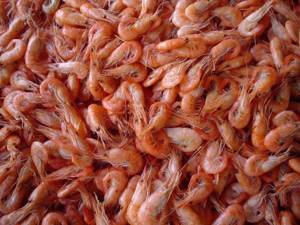
As for the fishing method, the use of a net or trawl with a diameter of no more than 0.7 meters is considered legal. At the same time, even the old-fashioned method is illegal, which consists in tying plant stems into bushes and lowering them to the bottom using a weight. Shrimps land en masse on wet bushes, all you have to do is get them out. This method is considered poaching and is punishable by a fine.
How to catch shrimp in the Black Sea and the Sea of Azov?
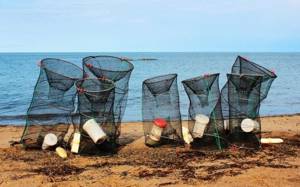
The Black and Azov Seas are one of the places where you can get a good catch of crustaceans. By adhering to certain rules, you can achieve a good catch.
- Black Sea shrimp are caught using standard methods.
- Before you start fishing in shallow water, you can feed them with pieces of raw chicken meat.
- To catch shrimp yourself, use a net with a fine mesh.
- Fishing in the Black and Azov Seas is carried out at night using a bright flashlight.
Fishing methods
The main three amateur methods of catching shrimp are the following:
- Use of a trawl. This fishing gear is a semicircle or rectangle made of metal with a bag with a fine mesh net attached along its diameter. The length of the bag is usually 3-4 meters. The trawl is lowered to the bottom and, with the help of ropes attached to a metal base, is pulled along the bottom. It is better to carry out the fishing process in the coastal zone, in the absence of large crowds of people. The best option would be to choose an area abundantly overgrown with algae. You should enter the water up to your waist and pull the trawl, following along the shore.
- Fishing with a net. This method of hunting shrimp involves the use of a fishing net with a diameter of up to 70 cm. A fishing net with small cells is attached to the rim. The handle of the tackle should be long and strong. In the evening or at night, you should move the net near piers, groins, sides of ships, and other elements of the coastal zone overgrown with mud and algae. For illumination and additional bait you need to use a bright flashlight.
- Net. This method is used when catching shrimp from a boat and consists of the following steps:
- Purchase of a captive network.
- Selecting a fishing spot with a depth no greater than the radius of the net used.
- Throwing the tackle to the bottom, where it will sink with the help of sinkers.
- Pulling the net using a specially provided rope.
- Removing the catch into prepared containers.
- Repeat the casting procedure until a sufficient amount of catch is collected.
Features of fishing by season
- In summer it has a spawning period. Catching it at this time is prohibited, and poaching is punishable by law.
- A massive movement of shrimp along the shores is observed in spring and autumn, in May and September-October, that is, when the water is warm enough. This means that hunting for her at this time will be most effective.
- In winter, crustaceans migrate to a depth of up to 30 meters, therefore, no matter how much you search with a net or trawl, you will not catch anything except silt and sand.
Other mining methods
In some countries, when catching the seafood in question, the following method is used:
- Take a landing net with a diameter of 70*75 cm and a handle of 2.5 m.
- The mesh is replaced with regular tulle.
- Taking into account the characteristics of the coastal zone, fishing is carried out from the shore, pier or boat.
Perhaps one of the most original ways of catching shrimp is to catch it on horseback.
This method has been used in Belgium since ancient times and to this day. It consists in the fact that nets were thrown into the sea from horses. It is noteworthy that a special breed of horses is used for such prey, since these animals are by nature afraid of sea water.
Fishing rules and techniques: tips and tricks
If we summarize all of the above, we will understand the main rules and guidelines for action:
From all of the above we can conclude:
- When fishing, the main thing is to choose the right time of year . In winter you won’t find crustaceans near the pier as it goes to great depths.
- It's better to go fishing at night
- You need to lure prey with the light of a flashlight ; it is also advisable to use fish and meat bait.
- When fishing, use permitted fishing gear and methods.
If you follow these simple rules, you will never be left without a catch.
Ways to preserve shrimp
Considering that a shrimp very quickly becomes unusable after catching (literally in 2-3 hours), an important factor is the possibility of preserving it after catching.
Most amateur fishermen place the caught shrimp in a vessel or a special container with ice. In industrial fishing, seafood is frozen directly on the ship. You can also preserve shrimp by placing it in a cut-off plastic bottle, filling it with water and placing it in the freezer. After transporting it in such a container to its destination, the water has time to thaw, and the sea mollusk retains its color and smell.
In some cases, for example, to use shrimp as bait, you can use the following method of storing it. The shrimp are placed in a container with sea water and zoster algae. Thus, they are kept alive for up to 2 hours.
How to breed shrimp
The main factors for a successful business are the temperature and composition of water, feed, length of daylight hours, and planting density. Each type of crustacean has its own unique combination of these factors.
Feeding
Shrimp are omnivores, and this is one of their main advantages. In their natural habitat, they feed on almost everything, from moss to fish. When there is not enough food, shrimp can eat each other.
In an artificial environment, the diet of shrimp includes mainly specially developed granular food. It contains algae, plankton, milk powder, flour with the addition of vitamins, minerals, and fish oil. They are made into a paste, dried and crushed. This makes convenient food granules that contain up to 35% protein.
Shrimp farming technology
Approximately once every 1.5-2 months, shrimp lay eggs; Usually a maximum of 30 larvae survive: they need to be planted separately. During the process of growth, shrimp can molt more than 10 times - during this time they shed their shell and increase in size. Then shedding occurs much less frequently. Small shrimp are very vulnerable: they can die when the temperature or water quality changes, so it is very important to monitor the maintenance of the required indicators and strictly adhere to the technology for growing shrimp.
The larvae are fed until they reach a weight of 0.25 grams and enter the postlarval stage, then they are gradually accustomed to fresh water and released into a pond or aquarium.
If it is a pond, the temperature should be at least 22°C. There must be microorganisms and algae there. If there is no such reservoir, the postlarvae must be kept in a shallow pool (up to 50 cm) for at least two more months until they reach a weight of 2–3 g. Per 1 sq. per meter of area, up to 1000 individuals can be planted, but when the shrimp grow, the density should not exceed 400 pieces per 1 square meter. meter.
When the shrimp have grown, they are released to the main stock. The ability to reproduce in shrimp will appear after 6 months, and after another year the crustaceans reach a weight of 70-100 grams.
When breeding giant shrimp, the conditions are slightly different: fertilized females must live in colder water (20–21°C), but then the temperature is increased to 28°C.
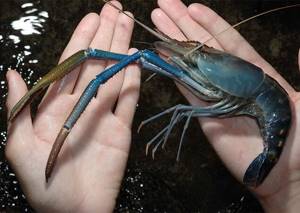
Shrimp fishing
The seafood in question is used not only as a delicacy, but also as bait when catching most types of fish in the Black and Azov Seas. Do not use shrimp when fishing for pelengas, mullet and katran.
There are 4 species of shrimp in the Black Sea. The most commonly used baits in line fishing are the palemon and crangon species. The mollusk is used as bait, just like a worm, carefully hooked onto a hook. The peculiarity of this bait is that it quickly deteriorates and changes color. Therefore, fresh shrimp is stored in a container with cold sea water, possibly along with algae.
Where do they live?
Decapod crustaceans live in almost all the seas of the world, and some have mastered fresh waters for their residence.
The size of some adult shrimp reaches three centimeters, but there are some that reach seven centimeters. A large number of shrimp inhabit the shores of Japan, China, India, and Southeast Asia. They are warm-blooded and cold-blooded, the first individuals are always large in size and are caught in the waters of Thailand, Brazil, and China. Cold-blooded shrimp are smaller in size, live in the northern seas, and are considered to be tastier than warm-blooded shrimp.
The most convenient place for decapods to breed is the Pacific Ocean , here they have all the conditions for life, which is why the islands of Somalia, Latin America, Brazil, and Ecuador are famous for their large and tasty shrimp.
There is deep-sea mining here and it is carried out on an industrial scale. Here, the prey is immediately heat-treated and frozen; it is believed that the quality of these marine animals is higher.
Belgium is famous for its old method of catching crustaceans. They attract tourists with nets, baskets and horses.
And in Russia, shrimp can be caught in the Far East; here the shores delight with almost a hundred species of shrimp. Two species live in the Black Sea, one lives on sandy soil, on the bottom, where there are small pebbles, the second on rocky areas, near rocky shores.
Shrimp caught in the Sea of Azov is considered one of the most delicious. The Baltic Sea, the North Sea, the waters of Transcaucasia and even the Amur River are rich in this pure protein, which is small in size, but tasty.
It is necessary to catch shrimp at night or in the evening; you can set traps in advance so that the “harvest” can be collected in the morning. The habitat of these crustaceans is at a depth of six hundred centimeters to one and a half meters, where there is a large accumulation of algae so that it can hide from danger.
Be sure to have information about the ebb and flow of your reservoir. The most convenient time for fishing is low tide, evening or night hours.
Blitz tips
To catch shrimp yourself, you need to stock up on:
- Cast net, net or trawl;
- Flashlight and ice container;
- Gloves and clothes that you don’t mind getting dirty.
When catching shrimp, especially if you are not wearing gloves, be careful not to prick yourself on its shell. Although such a wound is not fatal, it can contribute to the development of infection.
Optimal conditions for catching the seafood in question:
- Dark time of day or early morning;
- Cool water and low tide;
- Using the light of a flashlight as an additional bait for shrimp to the surface of the water.
Shrimp - a hobby, a delicacy and a harm
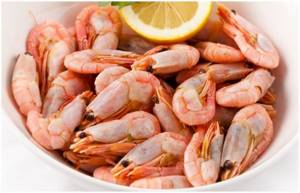
Whether you're an amateur or a professional, shellfish fishing is an unforgettable experience. Beautiful weather, warm water, sun and your favorite hobby, what could be better?
And if you also keep in mind what can be built from these living creatures, what dishes to prepare and what benefits they bring to the body. It is possible to strengthen the cardiovascular system, normalize the central nervous system, and reduce blood clotting. A person will receive the daily requirement of iodine by eating only fifty grams of shrimp.
But people with high blood cholesterol should avoid this delicacy, since they themselves contain cholesterol, heavy metal salts, and toxic substances.

